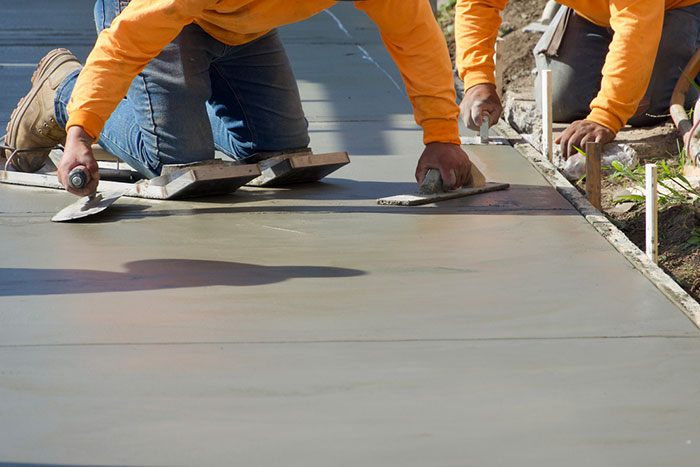How do you fix defective concrete? How do you fix poorly poured concrete? These are just some of the questions the team at Structural Services gets asked regularly. Often, it’s hard to give answers because it depends on the type of defect and the root cause.
Concrete plays a huge role in modern construction, from foundations and walls to bridges and high-rise buildings. A composite material made up of cement, aggregates (sand and gravel), and water, when mixed and allowed to cure properly, it forms a durable and versatile material that can last a lifetime.
However, concrete often presents some challenges. There’s some common issues that can arise include cracking, spalling, scaling, and discolouration. Read on as we take a deeper look at some of the common defects in concrete structures, why they happen, and how they can be rectified.
Concrete Cracking – Identifying the Causes
Cracking can occur due to a variety of factors, such as shrinkage, temperature changes, or structural stress. There’s also many different types of cracks (hairline cracks, shrinkage cracks, thermal cracks, structural cracks to name a few), and not all are necessarily bad for the structure, although they may detract from the visual appeal. It is important to identify the type of crack and the underlying cause in order to find effective solutions.
One of the primary causes of concrete cracking is improper curing. Concrete needs to be properly cured, which involves maintaining moisture and temperature levels during the initial hardening process. Inadequate curing can lead to shrinkage and the formation of cracks.
Another common cause of concrete cracking is structural stress. When a building or structure experiences excessive weight, movement, or seismic activity, the concrete can become stressed and crack. This type of cracking is often seen in foundations, walls, and other load-bearing structures.
There’s also environmental factors, such as temperature fluctuations, that can also contribute to cracking. Sudden changes in temperature can cause the concrete to expand and contract, leading to the formation of cracks.
Fixing cracks in concrete is crucial to prevent further damage. To address concrete cracking, the cause must be identified in order to implement the appropriate solution. In many cases, professional concrete repairs like patching or crack injections will be necessary.
Spalling and Scaling – Surface Deterioration
Concrete is incredibly durable but it is not immune to surface deterioration over time. Two common issues that can affect concrete surfaces are spalling and scaling.
Spalling refers to the flaking or chipping of the concrete surface, often resulting in fractured, compromised concrete. Caused by many factors including a poor-quality concrete mix, freeze-thaw cycles, chemicals, or mechanical stress. This can lead to the exposure of the underlying reinforcement, compromising the structural stability of the concrete. Scaling, on the other hand, is commonly known as ‘concrete cancer.’ It is the gradual loss of the concrete surface layer, typically caused by low cover (reinforcement too close to concrete surface), poor quality concrete, moisture ingress, chemical attack (salt, chlorine), or a combination of all. Spalling may appear as a cosmetic defect, but it is a potentially serious structural issue that requires professional rectification. Much like a ‘cancer,’ when left untreated it can spread over the structure and could lead to failure or collapse.
To rectify spalling and scaling, again, it is essential to identify the root causes and then implement appropriate rectification measures to prevent further deterioration and preserve the concrete’s structural strength. Regular inspections and preventive maintenance will help detect and address these issues before they escalate.
Discoloration and Staining – Ruining Aesthetic Appeal
Due to its porous nature, concrete is prone to stains and discolouring. These defects are aesthetic rather than structural, and they can detract from the overall appearance of concrete surfaces.
Some of the main causes of concrete discoloration and staining is exposure to environmental factors such as UV radiation, weathering, and the accumulation of dirt and grime, this can all lead to fading and discoloration. Chemical spills are another cause, these can result in localised stains that are more challenging to address.
Fortunately, there are several techniques available for restoring the aesthetic appeal of discoloured or stained concrete including deep cleaning, chemical treatments, and resurfacing. Power washing or the use of specialised cleaning solutions, can effectively remove surface-level discoloration and staining. Chemical treatments, involving the application of acidic or alkaline solutions, can help to break down and remove more stubborn stains. In cases of severe discoloration or extensive damage, resurfacing the concrete may be the most effective solution.
Efflorescence – White Powdery Deposits on Concrete
A common issue that can arise on concrete surfaces, manifesting as a white, powdery deposit is efflorescence. This phenomenon occurs when soluble salts within the concrete are drawn to the surface and crystallise as the water evaporates. While not structurally damaging, it can be unsightly and detract from the overall appearance of a concrete structure.
The concrete mix design, curing conditions, and environmental factors can all contribute to the formation of efflorescence. There are various techniques, including chemical treatments and surface cleaning that can be employed to prevent or remove it. Seek advice from professionals in concrete remedial solutions for the best advice.
Professional Concrete Rectification Services
At Structural Services Australia, we provide effective and affordable remedial construction services are designed to properly address issues such as cracks, spalling, and deterioration, ensuring the longevity of your concrete surfaces. If you have noticed any issues with your concrete structures, don’t wait until they become major problems. Consult us today and see why we are Melbourne’s trusted choice for precision and expertise in concrete rectification. Call 0413 755 256.


